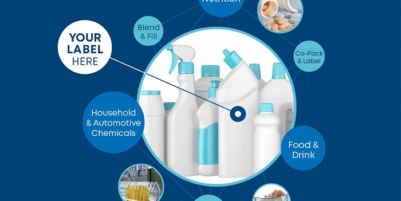-
Nutrivend selects Forterro’s Orderwise to support online expansion and streamline operations - 24 hours ago
-
ARROWXL LAUNCHES AMBITIOUS ZERO WASTE ROADMAP - April 8, 2025
-
THE BCMPA’S NEW CAMPAIGN DRIVES OUTSOURCING SUCCESS IN Q1 - April 7, 2025
-
BLACKOUT TECHNOLOGIES TARGETS TELEMATICS-INTEGRATED MOBILE DEVICE BLOCKING TO COMBAT SMARTPHONE DISTRACTION - April 1, 2025
-
OpenADR Alliance announces first OpenADR 3.0 certified products with EVoke Systems, E.ON Energy and Universal Devices - March 25, 2025
-
Growing fulfilment and contract packer appoints new Managing Director - March 25, 2025
-
When is it time to invest in a WMS? Understanding the key trigger points - March 25, 2025
-
eCapital helps Vantage Recruitment on its journey to financial success - March 24, 2025
-
Hugo Beck Celebrates 70 Years of Packaging Innovation with Open House Events - March 20, 2025
-
PROLOG FULFILMENT SUPPORTS LUNA DAILY’S COMMITMENT TO BETTER BODY CARE FOR ALL WOMEN - March 19, 2025
A new white paper from a leading supply chain consultancy suggests retailers are too fragmented in their approach to determining their Costs-To-Serve (CTS) and should instead adopt CTS analysis as a core, business-critical initiative for informing future decisions and direction.
“In a great many retail businesses Costs-To-Serve are treated as though they are a fixed overhead and allocated evenly across orders, when in reality they vary by the individual characteristics of each order – channel, geography, the nature of the goods, the behaviour of the customer, and so on. They also change over time, and not necessarily uniformly,” explains, Neil Adcock, Managing Director at Bis Henderson Consulting – authors of the report.
The report asks some fundamental questions: Take a given order, do you know what it will cost to fulfil that order? More acutely, do you know what margin you are making? In fact, are you actually making any profit at all? These are questions that many retailers may find difficult to answer.
The hidden costs
“Whether determining channels to market, or setting up or revising fulfilment and distribution strategies, the retailer needs a deep understanding of where the Costs-To-Serve are generated, how these vary across orders, and what actions can be taken to improve profitability on every order,” Adcock says. “Such actions could range from changing the locations of fulfilment centres, to varying the customer offer, to in some cases limiting service offerings or even withdrawing from some lines of business.”
The white paper sets out the many hidden factors influencing cost, margin and value in the supply chain and emphasises the importance of understanding CTS at a granular level across the broad gambit of products and services a retail business offers. “The analysis should inform the wider strategy, and should give clear visibility of margin and how to maximise it or protect it,” he says.
More than a one-off exercise
The report finds that CTS needs continual revisiting in order to inform and respond to higher-level business decisions and is an essential tool for protecting margin and ensuring profitability.
Adcock explains: “The balance of Costs-To-Serve is constantly changing as fuel costs, labour costs, rents, the affordability or otherwise of warehouse automation and so on vary, but also with changing customer behaviours. Particular channels may become more or less popular, for instance, as people drift back to the office, home delivery may decline relative to click and collect, or the nature of demand ‘peaks’ may change with recession. Also, the balance between branded and white label goods may change with economic hardship and that may affect how much margin is available to cover the CTS.”
The report states that there is no ‘standard model’, but offers valuable insights that are common to many retail scenarios, covering topics such as channels, distribution architecture, service offer, differentiated service levels, hidden costs, returns, accounting policies, exceptions and methodology.
The white paper offers pointers on how a retailer’s Costs-To-Serve are made up, where the ‘hidden’ costs are buried, which costs are truly fixed overhead and which are order-related. Critically, the report emphasises how retail businesses need to make CTS a central pillar of their supply chain thinking, helping them to make better-informed and more profitable policy decisions across the board, from channels-to-market to investment decisions and service level promises.
The full white paper is free to download here: http://bit.ly/3YHm04d
More on Bis Henderson Consulting at www.bis-hendersonconsulting.com

































